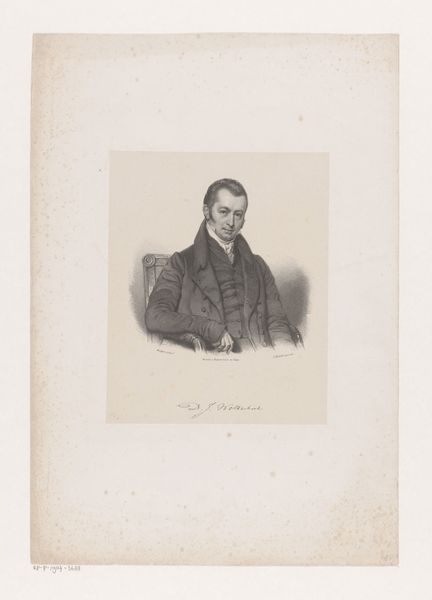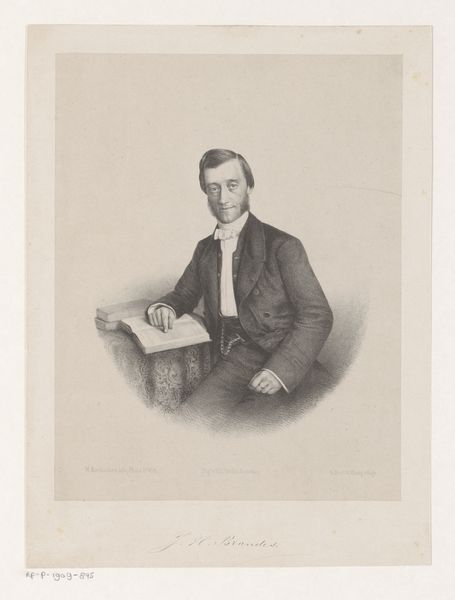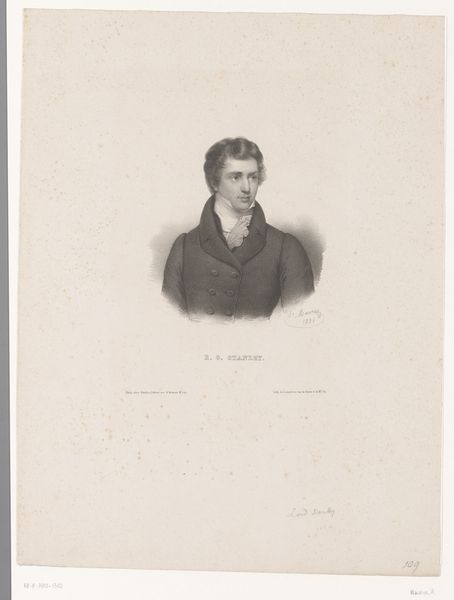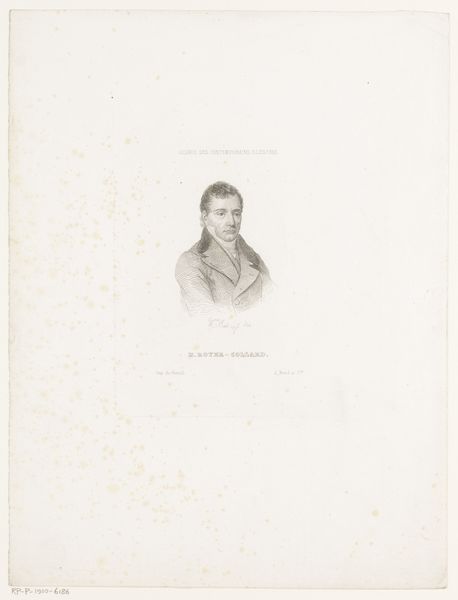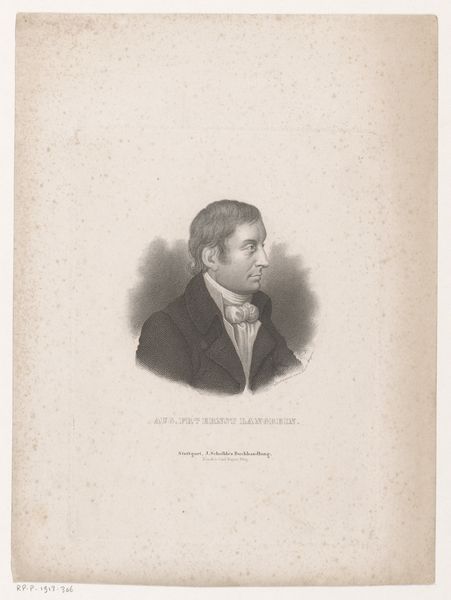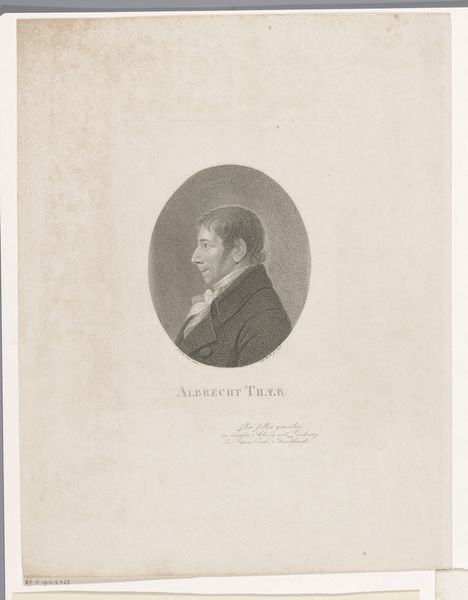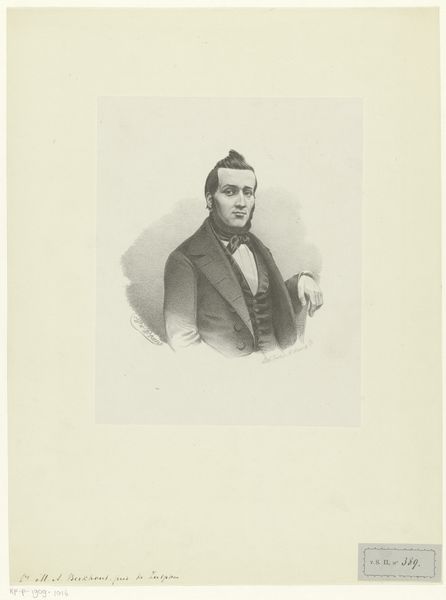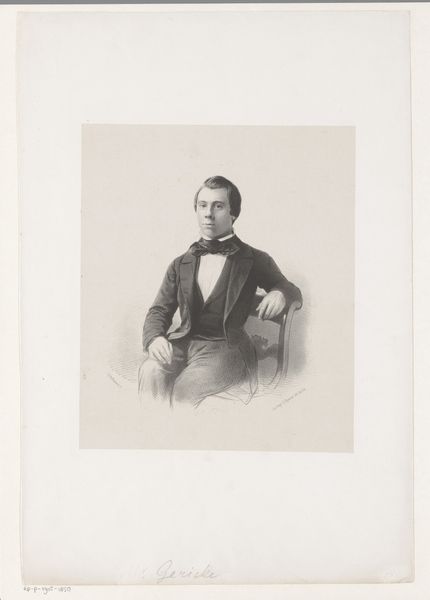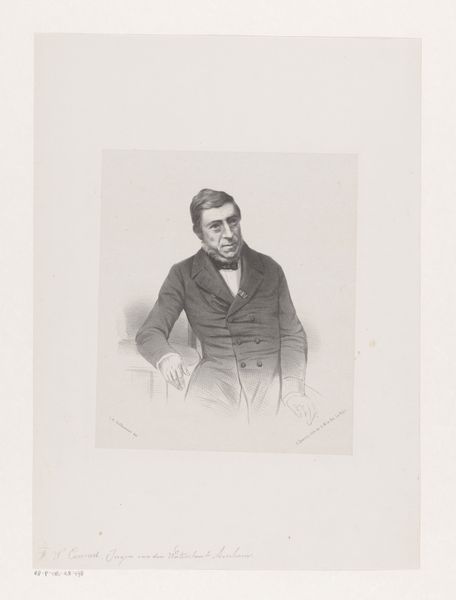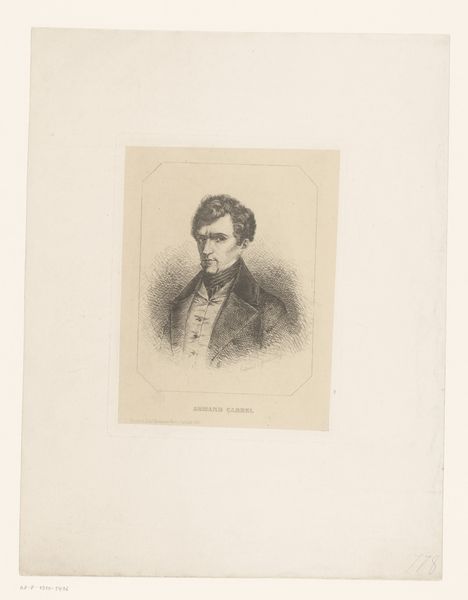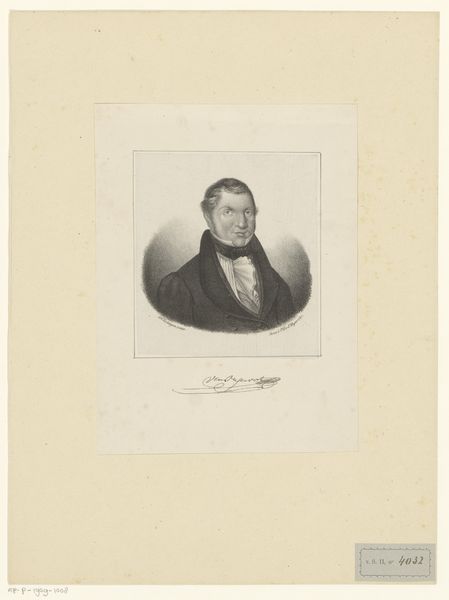
drawing, pencil
#
portrait
#
pencil drawn
#
drawing
#
imaginative character sketch
#
light pencil work
#
pencil sketch
#
personal sketchbook
#
idea generation sketch
#
pencil drawing
#
romanticism
#
pencil
#
sketchbook drawing
#
portrait drawing
#
pencil work
Dimensions: height 314 mm, width 245 mm
Copyright: Rijks Museum: Open Domain
Curator: The artwork before us, created in 1836 by Charles Baugniet, is a pencil drawing entitled "Portret van Félix De Vigne". Editor: It has an intimate, almost hesitant quality to it. The rendering of light is delicate and there’s a tentative feeling from the pencil strokes—like an initial impression rather than a definitive statement. Curator: Indeed, Baugniet’s choice of pencil as medium contributes to the image's informal aesthetic. This aligns with Romanticism’s broader interest in exploring human sentiment and subjectivity through accessible imagery. Note the architectural forms behind Félix, an interesting backdrop. Editor: Yes, the linearity throughout emphasizes the composition and how it defines space; how Baugniet uses the pencil to suggest tone and volume creates a very interesting effect. Curator: The sharp lines describing his suit create angular facets playing with the composition as much as they define the subject as an individual, giving visual weight to this area of the piece and showing the sharp features of the style of the era. We have to remember that social position and appearance would have had a huge effect on how society regarded people. Editor: Yet it’s a Romantic portrait; consider that gaze. It draws you in with a vulnerability absent in commissioned artworks intended for official or state purposes. Also, this kind of art gave regular people access to artwork during an era dominated by wealthy patrons. Curator: Very true. Baugniet is adept at employing pencil in a way that elevates it beyond a simple preparatory tool and brings to life Félix. It underscores Romanticism's move toward informality, which in and of itself is interesting. Editor: Thinking about the historical context certainly provides a strong point of access to appreciating the artistic achievement presented here. Thank you for these wonderful insights. Curator: It's through understanding form that we discern function, after all!
Comments
No comments
Be the first to comment and join the conversation on the ultimate creative platform.
